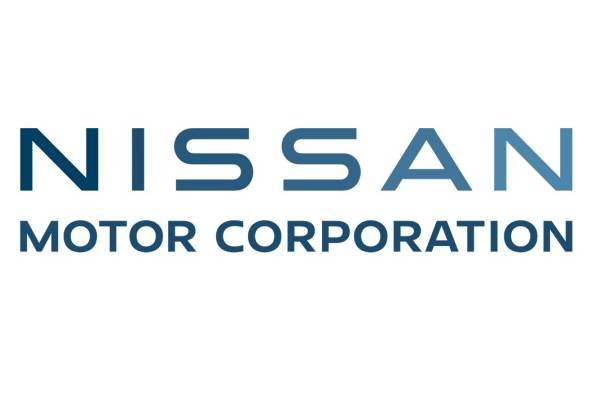โยโกฮามา, ญี่ปุ่น : บริษัท นิสสัน มอเตอร์ จำกัด กำลังดำเนินการตามมาตรการเพื่อฟื้นฟูประสิทธิภาพการทำงาน เพื่อสร้างธุรกิจที่คล่องตัว และยืดหยุ่นมากขึ้นโดยทันที ซึ่งสามารถปรับตัวได้อย่างรวดเร็วตามการเปลี่ยนแปลงของสภาวะตลาด โดยนิสสันได้เปิดเผยรายละเอียดเพิ่มเติมเกี่ยวกับการดำเนินการเหล่านี้ โดยระบุเป้าหมายสำหรับปีงบประมาณ 2026 และแผนริเริ่มที่สำคัญต่างๆ
มาโกโตะ อูชิดะ ประธานและซีอีโอของนิสสัน (Makoto Uchida – President and CEO) กล่าวว่า “นิสสันมีความมุ่งมั่นอย่างเต็มที่ในการดำเนินการพลิกฟื้นธุรกิจ โดยมีเป้าหมายที่จะลดต้นทุนลงประมาณ 400,000 ล้านเยน เราทุ่มเทเพื่อให้บรรลุโครงสร้างต้นทุนที่มีประสิทธิภาพมากขึ้น ในขณะที่ขับเคลื่อนการเติบโตของรายได้รวมผ่านผลิตภัณฑ์ที่มี สามารถแข่งขันได้ดียิ่งขึ้น สามารถตอบสนองต่อความต้องการที่หลากหลายของลูกค้าของเรา เรากำลังดำเนินการพลิกฟื้นธุรกิจโดยเน้นที่ประสิทธิภาพ และการเติบโตด้วยความเร็วมุ่งสู่จุดหมายของบริษัทฯ”
เป้าหมายสำหรับปีงบประมาณ 2026
นิสสันวางแผนที่จะปรับโครงสร้างต้นทุนให้เหมาะสม ลดต้นทุนคงที่ และต้นทุนผันแปรลง รวมประมาณ 400,000 ล้านเยน ในปีงบประมาณ 2026 ซึ่งจะสามารถลดจุดคุ้มทุนในธุรกิจในปีงบประมาณ 2026 จาก 3.1 ล้านหน่วย เหลือ 2.5 ล้านหน่วย ซึ่งจะทำให้มีกำไรจากการดำเนินงานที่มั่นคงอยู่ที่ 4%
มุ่งเป้าลดต้นทุนคงที่มากกว่า 300,000 ล้านเยน
ในด้านของต้นทุนคงที่นั้น มีเป้าหมายที่จะประหยัดได้กว่า 200,000 ล้านเยน จากค่าใช้จ่ายในการขาย และการบริหารทั่วไป (SG&A) ประมาณ 100,000 ล้านเยน จากการปรับโครงสร้างฐานการผลิต และประมาณ 30,000 ล้านเยน จากการพัฒนาประสิทธิภาพด้านต่างๆ
นิสสันวางแผนที่จะลดพนักงานประจำสำนักงาน (indirect employees) ทั่วโลก 2,500 คนโดยการปรับกระบวนการทำงาน ลดการจ้างงาน และเร่งรัดโปรแกรมออกจากงานโดยสมัครใจ นิสสันจะลดต้นทุนแรงงานต่อหน่วยด้วยมาตรการเพิ่มเติม ซึ่งรวมถึงการขยายการทำงานที่สามารถใช้พนักงานร่วมกันระหว่างแผนกกว่า 1,000 ตำแหน่ง และให้ความสำคัญกับค่าใช้จ่ายด้านการตลาดคงที่
นิสสันตั้งเป้าที่จะลดค่าใช้จ่ายประมาณ 100,000 ล้านเยน ด้วยการรวมสายการผลิต ปรับรูปแบบการทำงานแบบกะ และการโอนงาน โดยเริ่มจากโรงงานสามแห่งในไตรมาสที่ 1 ของปีงบประมาณ 2025 ได้แก่ โรงงานที่เมือง Smyrna และ เมือง Canton ในสหรัฐอเมริกา รวมถึงโรงงานในประเทศไทย การปรับขนาดให้เหมาะสมนี้ จะช่วยลดจำนวนพนักงานในโรงงานผลิตยานยนต์ และผลิตเครื่องยนต์ลงถึง 5,300 คนในปีงบประมาณ 2025 และ 1,200 คนในปีงบประมาณ 2026 ส่งผลให้มีพนักงานลดลงทั้งหมด 6,500 คน การประหยัดการผลิตเหล่านี้จะเสริมด้วยประสิทธิภาพด้านวิศวกรรม และการดำเนินงานใหม่ รวมถึงการเปิดตัวรถยนต์รุ่นใหม่ และการลดค่าใช้จ่ายในการลงทุน (Capital expenditures – CAPEX) และต้นทุนในการเปิดตัวผลิตภัณฑ์
ด้านของการปรับโครงสร้างฐานการผลิต นิสสันมีแผนที่จะลดกำลังการผลิตทั่วโลกลง 20% และปรับปรุงกำลังคนด้านการผลิตให้เหมาะสมภายในปีงบประมาณ 2026 ซึ่งรวมถึงการลดกำลังการผลิตที่ดำเนินการแล้วในจีนจาก 1.5 ล้านหน่วย เหลือ 1 ล้านหน่วย โดยจะผสานความพยายามอย่างต่อเนื่องที่จะลดกำลังการผลิตจาก 3.5 ล้านหน่วย เหลือ 3 ล้านหน่วยสำหรับโรงงานที่อยู่นอกประเทศจีน และเพิ่มอัตราการใช้กำลังการผลิตของโรงงานจาก 70% ในปีงบประมาณ 2024 เป็น 85% ในปีงบประมาณ 2026 ทั้งนี้เมื่อรวมโรงงานผลิตในประเทศจีน นิสสันตั้งเป้าที่จะลดกำลังการผลิตทั่วโลกจาก 5 ล้านหน่วย ในปัจจุบัน เหลือ 4 ล้านหน่วย ภายในปีงบประมาณ 2026
นิสสันตั้งเป้าลดต้นทุนประมาณ 30,000 ล้านเยนผ่านการพัฒนาประสิทธิภาพที่ดีขึ้น แนวคิดการพัฒนาแบบครอบคลุมทั้งกระบวนการจะช่วยลดระยะเวลาในการนำเสนอสินค้าออกสู่ตลาด และลดต้นทุนการพัฒนา ทำให้ประสิทธิภาพเพิ่มมากขึ้น และลดต้นทุนได้ประมาณ 20,000 ล้านเยน แนวทางแบบบูรณาการนี้จะนำไปใช้กับโครงการที่กำลังดำเนินอยู่ โดยจะได้รับประโยชน์ตั้งแต่ปี 2025 เป็นต้นไป รถยนต์รุ่นแรกที่ใช้กระบวนการนี้จะเปิดตัวในปีงบประมาณ 2026
ลดต้นทุนผันแปรได้ 100,000 ล้านเยน
นิสสันตั้งเป้าที่จะลดต้นทุนที่เกิดจากการออกแบบลง 60,000 ล้านเยน โดยเริ่มจากการลดความซับซ้อนของการออกแบบ (ปรับประสิทธิภาพ และเนื้อหาของรถยนต์) ในผลิตภัณฑ์หลัก 6 รายการ ทั่วโลก เพื่อลดต้นทุนการดำเนินการด้านการผลิต ได้แก่ การลดความซับซ้อนของชิ้นส่วนลงมากถึง 70% การปรับปรุงการวางแผนการผลิตเพื่อขจัดความไม่มีประสิทธิภาพของห่วงโซ่อุปทาน และลดต้นทุนในคลังสินค้า และการเพิ่มประสิทธิภาพในขณะที่ลดต้นทุนในการจัดเก็บชิ้นส่วนอะไหล่ด้านการบริการหลังการขาย ด้วยความพยายามร่วมกันต่างๆ เหล่านี้ นิสสันตั้งเป้าที่จะลดต้นทุนโดยรวมลงประมาณ 100,000 ล้านเยน
สร้างการขับเคลื่อนการเติบโตของรายได้
เพื่อให้แน่ใจว่ารายได้จะเติบโต นิสสันจะจัดหาชุดของผลิตภัณฑ์ที่ติดตั้งเทคโนโลยีที่แตกต่างกันซึ่งสามารถปรับแต่งให้เหมาะกับความต้องการของลูกค้าทั่วโลก
ในปีงบประมาณ 2024 นิสสันได้ปรับปรุงกลุ่มผลิตภัณฑ์ใหม่ โดยนำเสนอผลิตภัณฑ์ที่แตกต่างกันหลากหลาย เช่น Qashqai, Juke, Kicks, Armada, Note, Patrol, Magnite, QX80 และ Murano โดยแต่ละรุ่นได้รับการปรับปรุงเพื่อเพิ่มมูลค่าให้กับลูกค้า และต้องสามารถส่งมอบในปริมาณที่ทำกำไรได้ซึ่งสอดคล้องกับความต้องการของตลาดที่แตกต่างกัน
เพื่อเพิ่มประสิทธิภาพในการนำเสนอผลิตภัณฑ์ บริษัทจะเปิดตัวรถยนต์แบบปลั๊กอินไฮบริด (plug-in hybrid) รุ่นใหม่ในปีงบประมาณ 2025 และ 2026 รวมทั้งปรับปรุงรถยนต์แบบมินิแวนรุ่นที่ได้รับรางวัล และมินิแวนขนาดใหญ่ นอกจากนี้ นิสสันยังจะเสริมความแข็งแกร่งให้กับกลุ่มผลิตภัณฑ์รถยนต์ไฟฟ้าที่ปล่อยมลพิษเป็นศูนย์ด้วยรถยนต์รุ่น LEAF ใหม่ ไปจนถึงรถยนต์คอมแพคไฟฟ้ารุ่นใหม่ และรถยนต์พลังงานใหม่ (NEV) รุ่นใหม่ ที่มุ่งเป้าไปที่ตลาดของประเทศจีน
การมีส่วนสนับสนุนต่อการเติบโตที่ทำกำไรได้อย่างยั่งยืนนั้นแสดงให้เห็นได้จากรถยนต์ที่ใช้เครื่องยนต์ e-POWER รุ่นที่ 3 (third-generation e-POWER) โดยรถยนต์รุ่น e-POWER รุ่นที่ 3 จะได้รับการปรับปรุงที่สำคัญหลายประการ เช่น ประสิทธิภาพการใช้เชื้อเพลิงที่ดีขึ้น 20% และต้นทุนที่ลดลง 20% เมื่อเทียบกับรุ่นแรก โดยเฉพาะอย่างยิ่ง ประสิทธิภาพการใช้เชื้อเพลิงที่ความเร็วสูงจะได้รับการปรับปรุงให้ดีขึ้นถึง 15% เมื่อเทียบกับรุ่นที่สอง ทำให้บรรลุประสิทธิภาพการใช้เชื้อเพลิงระดับสูงสุดในยุโรป และถือเป็นการปรับปรุงที่สำคัญในตลาดของสหรัฐอเมริกา
ผลกำไรในอนาคตของนิสสันยังขึ้นอยู่กับนวัตกรรมทางเทคนิค โดยเน้นที่ยานยนต์อัจฉริยะมากขึ้น ห้องโดยสารอัจฉริยะอันเป็นเอกลักษณ์ และคุณสมบัติช่วยเหลือผู้ขับขี่ต่างๆ จะถูกนำมาใช้ในรุ่นที่วางแผนเปิดตัวภายในปีงบประมาณ 2026 โดยหลังจากนั้น นิสสันตั้งเป้าที่จะทำให้การขับขี่อัตโนมัติแบบ door-to-door กลายเป็นเรื่องธรรมดา และนำเสนอบริการการขับเคลื่อนแบบไร้คนขับในญี่ปุ่น โดยมีแผนจะเปิดตัวในเชิงพาณิชย์ภายในปีงบประมาณ 2027
การผสมผสานระหว่างการเปิดตัวรถยนต์รุ่นใหม่ การขยายตลาด และความคิดริเริ่มเชิงกลยุทธ์นี้จะผลักดันการเติบโตของรายได้รวมในปีงบประมาณ 2025 และ 2026 โดยมีแผนจะเพิ่มปริมาณการขายผ่านการเปลี่ยนรุ่น และขยายเข้าสู่กลุ่มลูกค้าใหม่ๆ
ปรับปรุงการจัดองค์กรการบริหาร และกระบวนการต่างๆ
เพื่อเพิ่มความเร็วในการตัดสินใจ ผู้บริหารระดับสูงของนิสสันจะใช้กรอบงานแบบชั้นเดียว โดยลดตำแหน่งผู้บริหารระดับสูงลง 20% และสร้างโอกาสก้าวหน้าให้กับคนรุ่นต่อไปภายในองค์กรที่ปรับปรุงใหม่ และไม่มีขอบเขต
บริษัทจะลดความซับซ้อนของขั้นตอนการบริหาร และขยายขอบเขตการควบคุมเพื่อปรับปรุงประสิทธิภาพในการตัดสินใจ นอกจากนี้ บทบาท และตำแหน่งของผู้บริหารจะได้รับการประเมิน และจัดประเภทใหม่ให้สอดคล้องกับวัตถุประสงค์ทางธุรกิจภายใต้ระบบรวมในระดับโลกใหม่ ด้วยการกำหนดบทบาท และความรับผิดชอบที่ชัดเจนระหว่างฟังก์ชันระดับโลก และฟังก์ชันระดับภูมิภาค นิสสันตั้งเป้าที่จะสร้างการบริหารของสำนักงานใหญ่ระดับโลกให้มีความคล่องตัวยิ่งขึ้น ด้วยฟังก์ชันที่เป็นต้นน้ำแบบศูนย์รวม และฟังก์ชันที่รับนโยบายเป็นแบบกระจายอำนาจ ซึ่งจะช่วยให้หน่วยธุรกิจในภูมิภาคต่างๆ สามารถเพิ่มประสิทธิภาพในการดำเนินงานได้ดียิ่งขึ้น
การปรับโครงสร้างธุรกิจ และพอร์ตโฟลิโอ เพื่อการเพิ่มประสิทธิภาพสินทรัพย์
นิสสันจะใช้มาตรการที่มีอยู่ทั้งหมดเพื่อดำเนินการในขั้นตอนต่อไปของการปรับโครงสร้างเชิงรุก โดยยึดตามมาตรการที่เป็นไปได้ทั้งหมด นิสสันจะดำเนินการตรวจสอบสถานะในตลาด และกำหนดว่าจะคงสถานะไว้ที่ใด พร้อมทั้งกำหนดกลยุทธ์การดำเนินงานสำหรับตลาดที่เหลือ นอกจากนี้ บริษัทจะเพิ่มประสิทธิภาพผลิตภัณฑ์หลัก แพลตฟอร์ม และรูปแบบของเครื่องยนต์ เพื่อจัดลำดับความสำคัญ และปรับปรุงด้านการลงทุน ในขณะเดียวกัน นิสสันจะเร่งดำเนินโครงการความร่วมมือกับพันธมิตรต่างๆ รวมถึง ฮอนด้า และพันธมิตรคู้ค้าอื่นๆ
ในด้านการเพิ่มประสิทธิภาพของสินทรัพย์ นิสสันจะประเมินสินทรัพย์อย่างเข้มงวดเพื่อค้นหาโอกาสในการลดต้นทุน และเพิ่มประสิทธิภาพอย่างมีนัยสำคัญ
ดำเนินการเชิงกลยุทธ์เพื่อสำรวจความร่วมมือใหม่ๆ อย่างแข็งขัน
นิสสันจะดำเนินการตรวจสอบเชิงกลยุทธ์เพื่อแสวงหาโอกาสในการหาพันธมิตรที่มีศักยภาพ เพื่อเพิ่มมูลค่าองค์กรของนิสสันอย่างมีนัยสำคัญ
นิสสันได้เริ่มดำเนินการตามแผนริเริ่มที่กล่าวข้างต้นแล้ว และมีแผนที่จะแจ้งให้ทราบข้อมูลเพิ่มเติมภายในหนึ่งเดือนหลังจากนี้
Nissan Outlines Progress of Comprehensive Turnaround Measures
* Achieve cost savings of around 400 billion yen through a wide range of initiatives
* Adjust the company’s cost structure to accommodate a volume of 3.5 million units
* Decrease the automotive business break-even point to 2.5 million units by FY26
* Conduct strategic review to actively explore new partnerships
YOKOHAMA, Japan : Nissan Motor Co., Ltd. is implementing immediate measures to turnaround its performance and create a leaner, more resilient business capable of swiftly adapting to changes in the market. Today, Nissan shared additional details regarding these actions, outlining targets for fiscal year 2026 and key initiatives.
Nissan president and CEO Makoto Uchida remarked: “Nissan is fully committed to its turnaround actions, aiming to reduce costs by around 400 billion yen. We are dedicated to achieving a more efficient cost structure while driving top-line growth through enhanced competitive products that cater to the diverse needs of our customers. We are executing our turnaround—centered on efficiency and growth—with pace and purpose.”
Target for fiscal year 2026
Nissan plans to optimize its cost structure and reduce fixed and variable costs by a total of approximately 400 billion yen in fiscal year 2026, which will reduce its break-even point in the automotive business in fiscal year 2026 from 3.1 million units to 2.5 million units. This will enable a stable operating margin of 4%.
Targeting >300 billion yen fixed cost reduction
In terms of fixed costs, savings of approximately 200 billion yen are targeted from selling, general, and administrative expenses (SG&A), about 100 billion yen from restructuring the manufacturing base, and around 30 billion yen from development efficiencies.
Nissan plans to reduce 2,500 global indirect employees by streamlining operations, implementing hiring reductions, and accelerating voluntary separation programs. Nissan will achieve reductions in unit labor costs with additional measures including expansion of shared service centers by 1,000 positions and prioritized fixed marketing expenses.
Nissan aims to achieve approximately 100 billion yen in savings by consolidating production lines, adjusting shift patterns, and transferring jobs, starting with three plants in Q1 FY25: Smyrna and Canton plants in the U.S., and in Thailand. This rightsizing will reduce headcount in vehicle and powertrain plants by 5,300 in FY25 and 1,200 in FY26, contributing to a total reduction of 6,500. These production savings will be complemented by new engineering and operational efficiencies, including in the launch of new models and in reducing CAPEX and costs for product introductions.
In terms of restructuring its manufacturing base, Nissan plans to reduce its global production capacity by 20% and optimize its manufacturing workforce by fiscal year 2026. This includes a capacity reduction already implemented in China from 1.5 million units to 1 million units. It will combine with ongoing efforts that will reduce capacity from 3.5 million units to 3 million units for plants outside China and increase the plant utilization ratio from 70% in fiscal year 2024 to 85% in fiscal year 2026. In total, including plants in China, Nissan is aiming to reduce global production capacity from the current 5 million units to 4 million units by fiscal year 2026.
Nissan targets an approximately 30-billion-yen cost reduction through improved development efficiency. The family development concept will shorten time-to-market and reduce development costs, achieving about 20 billion yen in efficiencies. The integrated approach will be applied to ongoing projects, with the benefits realized from 2025 onwards. The first model utilizing this process is set to launch in fiscal year 2026.
100 billion yen in variable cost saving
Nissan aims to reduce design-driven costs by an approximate 60 billion yen, starting with the simplification of design (adjusting model performance and content) across its six major global products. Various initiatives for manufacturing operational cost reductions include reducing parts complexity by up to 70%, improving production planning to eliminate supply chain inefficiencies and lower warehouse costs, and enhancing efficiency while reducing costs in after-sales parts warehousing. Through these combined efforts, Nissan targets a total cost reduction of around 100 billion yen.
Driving topline growth
To ensure revenue growth, Nissan will provide a suite of products equipped with differentiated technologies tailored to global customer needs.
In FY24, Nissan refreshed its model lineup, offering a range of differentiated products such as the Qashqai, Juke, Kicks, Armada, Note, Patrol, Magnite, QX80, and Murano. Each model has been renewed to maximize customer value and is essential for delivering profitable volume aligned with distinct market demands.
To further enhance its offerings, the company will introduce new plug-in hybrid models in FY25 and FY26, and refresh its award-winning minivehicles and large minivans. Nissan will also strengthen its zero-emission EV lineup with the new LEAF, an all-new compact EV, and a new NEV targeted at the Chinese market.
The contribution to sustainable profitable growth is exemplified by third-generation e-POWER models. The third generation offers significant improvements, including 20% improved fuel efficiency and 20% reduction in cost compared to the first generation. In particular, fuel efficiency at high speeds has been improved by 15% compared to the second generation, achieving top-class fuel efficiency in Europe and significant improvement in the U.S.
Nissan’s future profitability will also depend on technical innovation, with an increased focus on intelligent vehicles. Unique intelligent cockpits and driver assistance features will be introduced in models planned for launch by fiscal year 2026. In the coming years, Nissan aims to democratize door-to-door autonomous driving and offer driverless mobility services in Japan with plans for commercialization by fiscal year 2027.
This combination of new model launches, market expansions, and strategic initiatives will drive top-line growth in fiscal years 2025 and 2026, with a plan for volume sales increases through model replacements and expansion into new segments.
Streamline organization and processes
To enhance decision-making speed, Nissan’s top management will adopt a single-layer, non-officer framework, reducing top management positions by 20% and creating advancement opportunities for the next generation within a streamlined, borderless organization.
The company will also simplify organizational layers and expand the span of control to improve decision-making efficiency. Additionally, roles and management positions will be evaluated and reclassified in alignment with business objectives under a new unified global system. By establishing clear roles and responsibilities between global and regional functions, Nissan aims to create a leaner global headquarters with centralized upstream functions and decentralized downstream functions, empowering regions to enhance operational efficiencies.
Business and portfolio restructuring; asset optimization
By seizing every possible measure for improvement, Nissan will build on its current measures to proactively advance the next phase of its restructuring. Nissan will carry out a review of its market presence and determine where to remain, outlining an operational strategy for the rest of the markets. The company will also optimize core products, platforms and powertrains to prioritize and streamline investments. Meanwhile, Nissan will accelerate collaborative projects with its Alliance partners, Honda, and other partners.
In the area of asset optimization, Nissan will rigorously evaluate its assets to uncover opportunities for substantial cost reductions and efficiency enhancements.
Conduct strategic review to actively explore new partnerships
Nissan will conduct a strategic review in pursuit of partnership opportunities with the potential to significantly enhance Nissan’s corporate value.
Nissan has already begun implementing the initiatives mentioned above and plans to provide further updates within a month.









